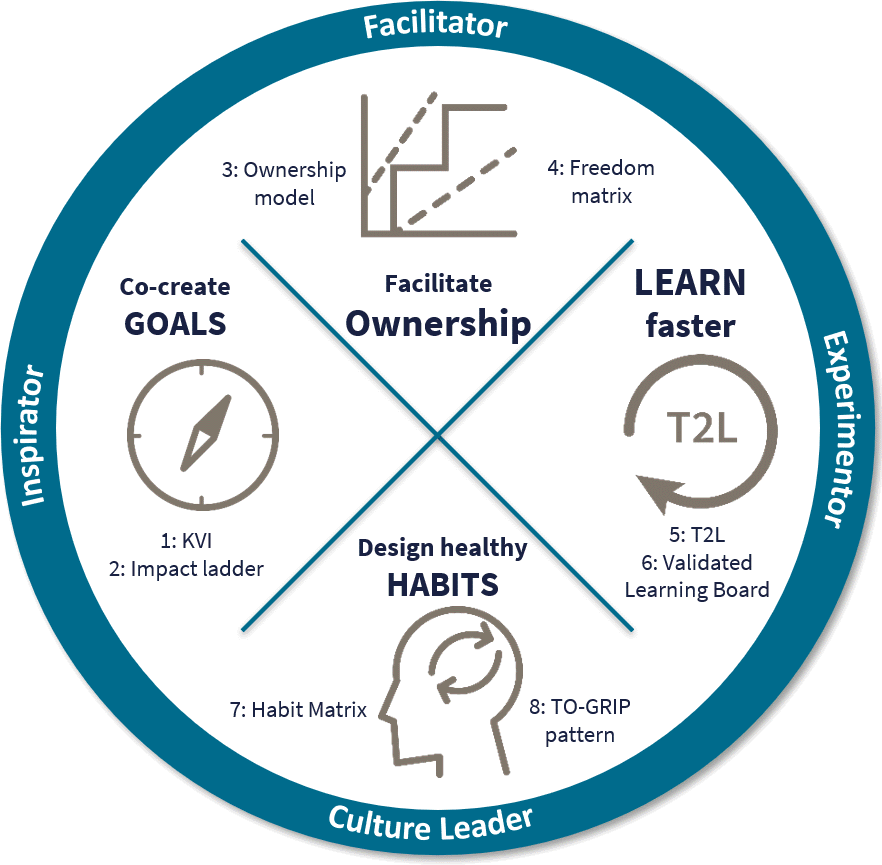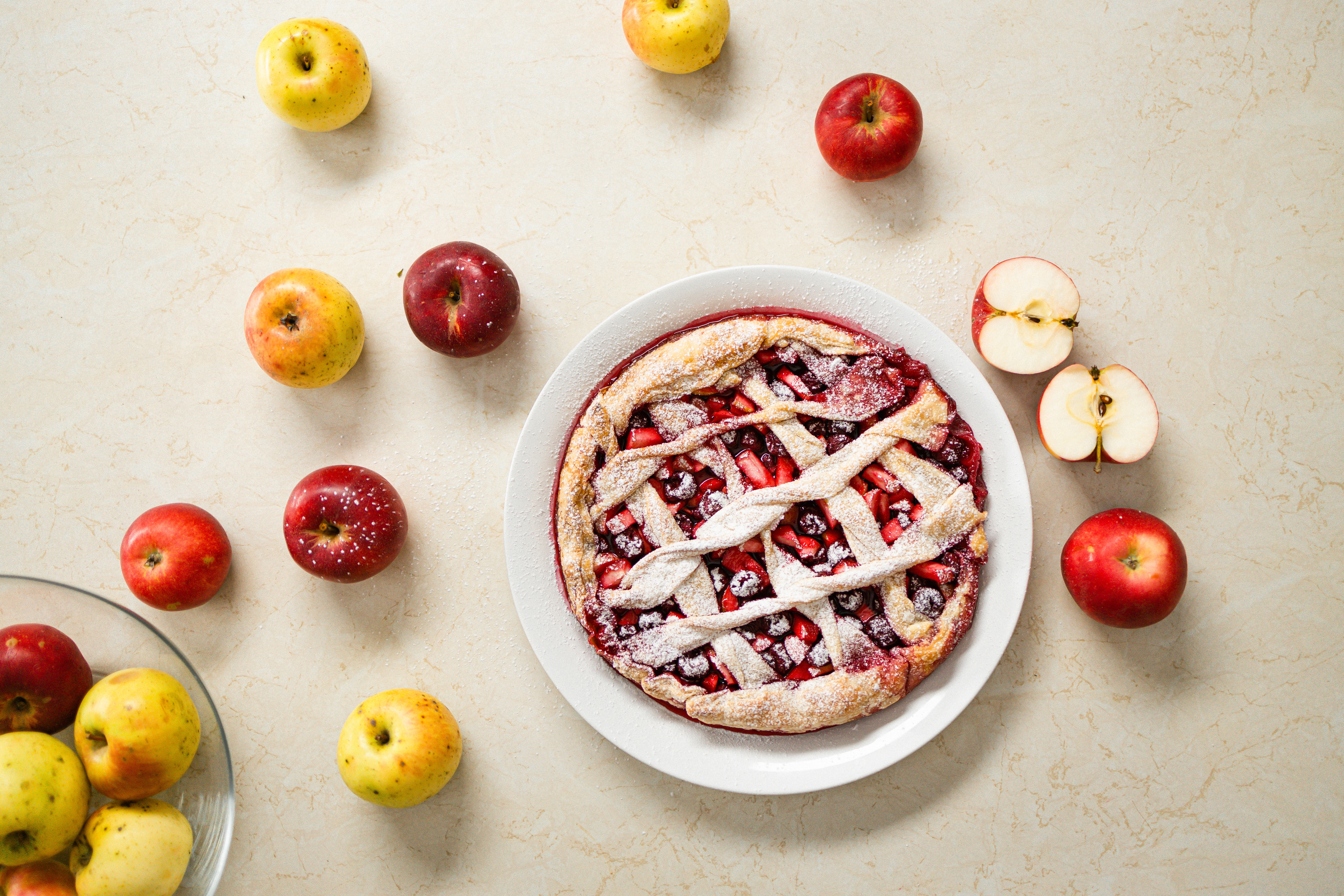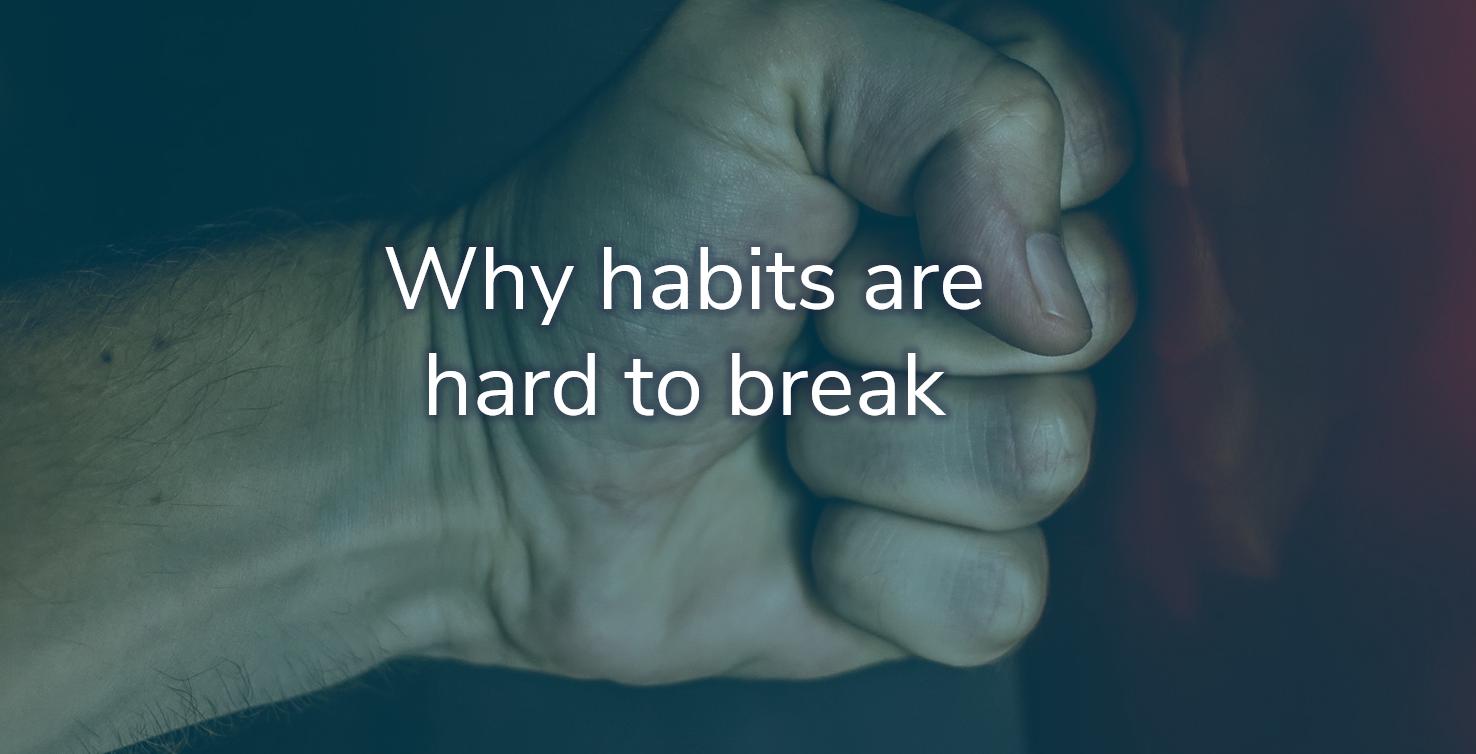
TO-GRIP acronym
Let's improve the context
Why this tool
The agile leader is responsible for creating the right context so self-managing teams can thrive. But how to create that? What is a right context? With infinite freedom? Just trusting the teams they will manage? Or the traditional micro-management?
The TO-GRIP tool focuses on the few things the self-managing teams need to thrive. The leader has to make sure these 6 ingredients are in place.
The tool can be used for improvements, strategic action-items or major changes. Both managers and team members themselves can take the initiative to use this tool. To improve things like ownership, faster learning from customers or steering on customer impact in a new way.
TO-GRIP is an acronym. It consists of six parts that can be filled in and are closely related. Every part is important for the tool to work properly. The tool helps the agile leader to implement improvements in a structural way. Not to make improvements in the old way through a plan of approach, detailed Gantt charts or command & control.
Example TO-GRIP: Improve Ownership
For example, to increase the ownership in an organization, the next TO-GRIP tool can be used.| Team | 7 people: from various Agile teams there is a representative. Together they accelerate. They spend around 4 hours a week on the department-wide improvement |
| Owner | The agile leader is the Owner of this improvement. He gives the Team the right freedom so they can work on the improvement. |
| Goal | The goal is to plot the teams on the Ownership-model. |
| Rhythm | The team meets every Monday morning at 10:00 am. There they discuss progress, divide action points and work together until lunch. Every other week around 10:30 the management team comes along to see where they can help. |
| Inspect | The progress is visually on the wall. Here you can read the catchy ambition: 'All teams take ownership to deliver more value for our customers'. There is also an overview of the most important actions. There is also an overview of all teams and where they are in the Ownership model. |
| Period | The team is at least nine months together. Everyone has expressed his commitment to work for 9 months on this improvement. After 9 months, we evaluate whether the goal has been achieved and whether we should continue with this TO-GRIP. |
Recent blogs on Culture
The toolkit
The steering wheel of the agile leader consists of four components. Each component consists of two practical tools. So in total eight tools. The tools are explained in such a way that leaders can immediately start working on this. The tools can be used separately and as such successful. Of course, all tools together – the toolkit – reinforce each other. It concerns the following eight tools:- KVI – the Key Value Indicator (KVI) is the most important indicator for value creation for the team.
- Impact ladder – for brainstorming and visualizing the customer impact. This helps teams continuously improve their products and services.
- Ownership model – visualizes what teams need to take ownership.
- Freedom matrix – what freedoms and responsibilities does the team have at what time.
- T2L – to measure the business agility.
- Validated Learning Board (VLB) – to visually keep track of the learning process of the team.
- Habit matrix – to support culture change and the design of new habits.
- TO-GRIP – to support the agile leader in implementing major improvements.



